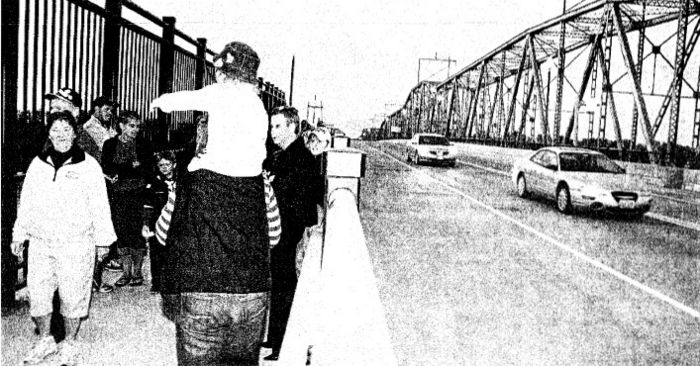Difference between revisions of "642.11 Pedestrian Grade Separations"
m (moved info from former EPG 642.1 article to this new article, EPG 642.4, as part of expanded guidance including ADA guidance for EPG 642) |
(Per DE, please closely read the article since most of the article has been re-written. EPG 642.1 through EPG 642.5 have been slightly revised and renumbered as EPG 642.8 through EPG 642.12.) |
||
| (2 intermediate revisions by the same user not shown) | |||
| Line 1: | Line 1: | ||
| + | |||
The potential need for pedestrians to move across multilane facilities with lengthy distances between signalized intersections must be considered during design. For instance, near schools, parks, hospitals, public buildings or shopping centers there may be high demand for pedestrians to cross a roadway between signalized intersections. A raised median, with curb cuts, is the preferred approach to provide a safer crossing for pedestrians. A pedestrian underpass or overpass may also be considered if it is economically feasible. | The potential need for pedestrians to move across multilane facilities with lengthy distances between signalized intersections must be considered during design. For instance, near schools, parks, hospitals, public buildings or shopping centers there may be high demand for pedestrians to cross a roadway between signalized intersections. A raised median, with curb cuts, is the preferred approach to provide a safer crossing for pedestrians. A pedestrian underpass or overpass may also be considered if it is economically feasible. | ||
| − | It is not practical to develop warrants governing the construction of pedestrian grade separation facilities. Each situation must be considered on its own merits. Such facilities are generally warranted only at locations where exceedingly heavy volumes of pedestrian traffic must cross a heavy vehicular flow. When the construction of a pedestrian grade separation is considered, an investigation | + | It is not practical to develop warrants governing the construction of pedestrian grade separation facilities. Each situation must be considered on its own merits. Such facilities are generally warranted only at locations where exceedingly heavy volumes of pedestrian traffic must cross a heavy vehicular flow. When the construction of a pedestrian grade separation is considered, an investigation should be made including studies of pedestrian crossing volumes, type of highway to be crossed, location of adjacent crossing facilities, the predominant type and age of persons who will use the facility and the cost of constructing the pedestrian grade separation. A pedestrian grade separation should only be constructed when the need for the safe movement of pedestrians cannot be provided in a more efficient manner. Additional guidance concerning pedestrian grade separations can be found in an AASHTO publication <i>Guide Specifications for Design of Pedestrian Bridges</i>. |
[[image:642.1.3.jpg|center|700px]] | [[image:642.1.3.jpg|center|700px]] | ||
| − | [[category:642 Pedestrian Facilities]] | + | [[category:642 Pedestrian Facilities|642.11]] |
Latest revision as of 09:35, 20 March 2020
The potential need for pedestrians to move across multilane facilities with lengthy distances between signalized intersections must be considered during design. For instance, near schools, parks, hospitals, public buildings or shopping centers there may be high demand for pedestrians to cross a roadway between signalized intersections. A raised median, with curb cuts, is the preferred approach to provide a safer crossing for pedestrians. A pedestrian underpass or overpass may also be considered if it is economically feasible.
It is not practical to develop warrants governing the construction of pedestrian grade separation facilities. Each situation must be considered on its own merits. Such facilities are generally warranted only at locations where exceedingly heavy volumes of pedestrian traffic must cross a heavy vehicular flow. When the construction of a pedestrian grade separation is considered, an investigation should be made including studies of pedestrian crossing volumes, type of highway to be crossed, location of adjacent crossing facilities, the predominant type and age of persons who will use the facility and the cost of constructing the pedestrian grade separation. A pedestrian grade separation should only be constructed when the need for the safe movement of pedestrians cannot be provided in a more efficient manner. Additional guidance concerning pedestrian grade separations can be found in an AASHTO publication Guide Specifications for Design of Pedestrian Bridges.
